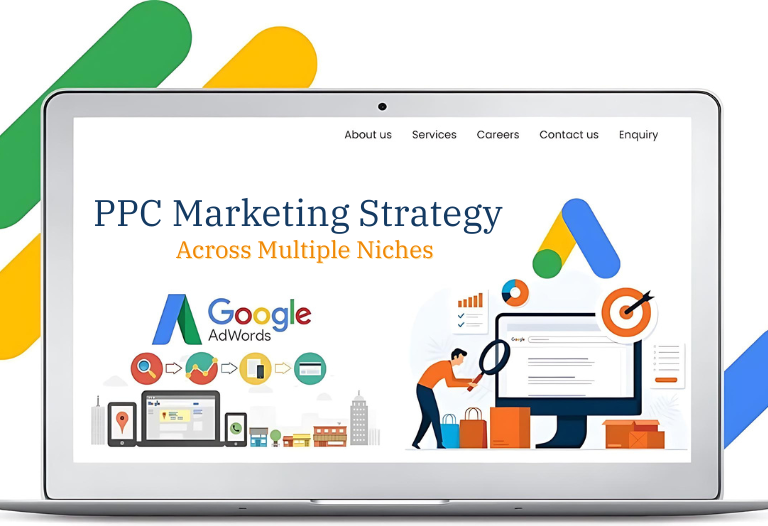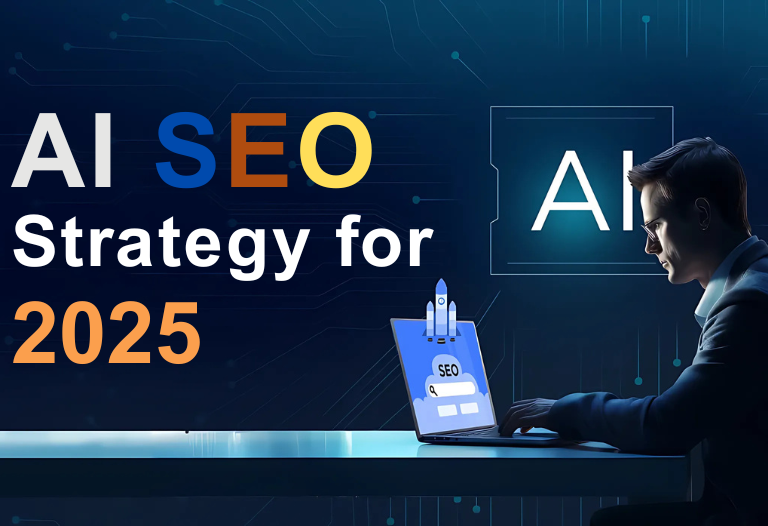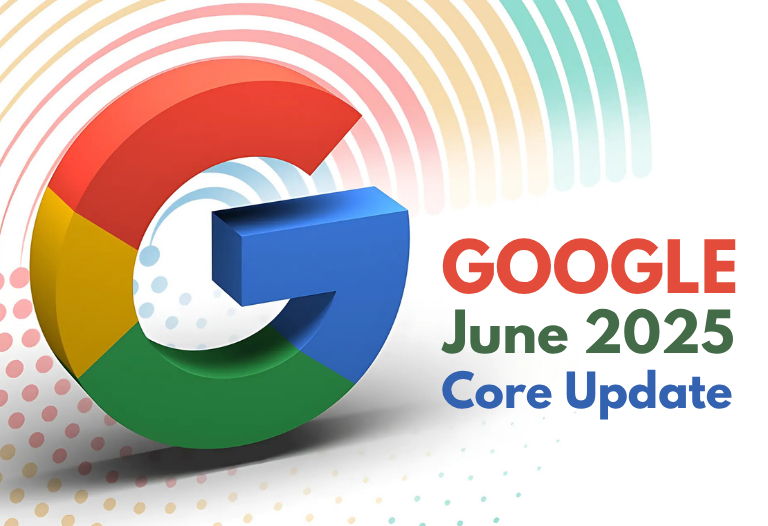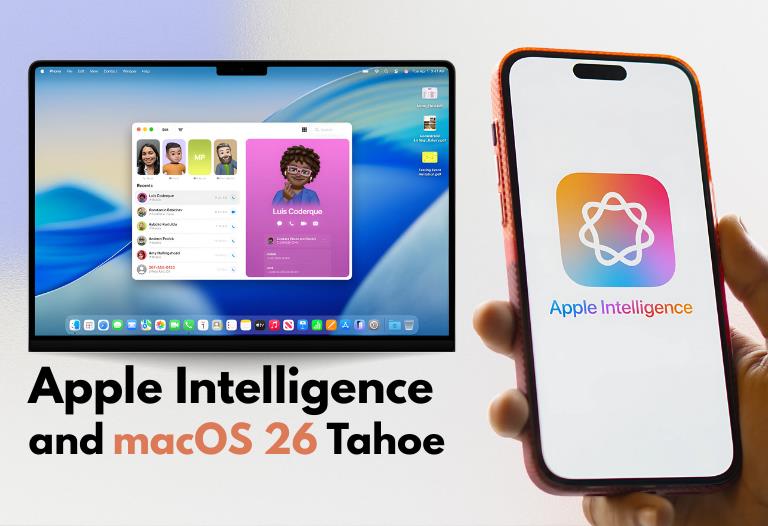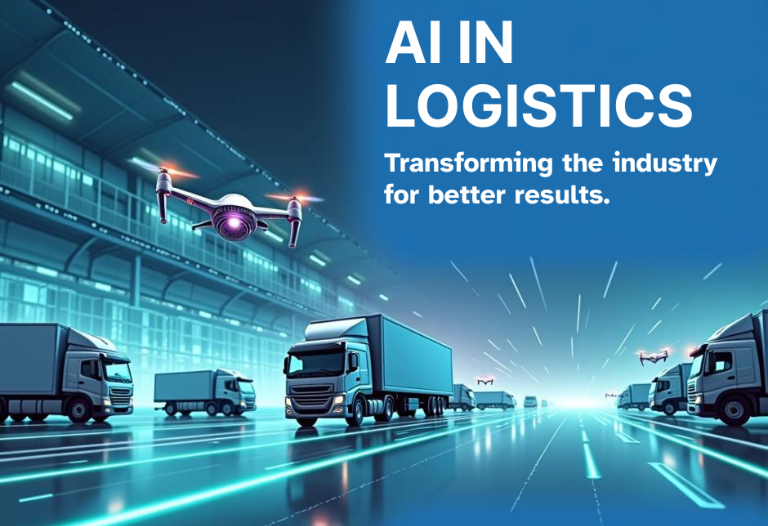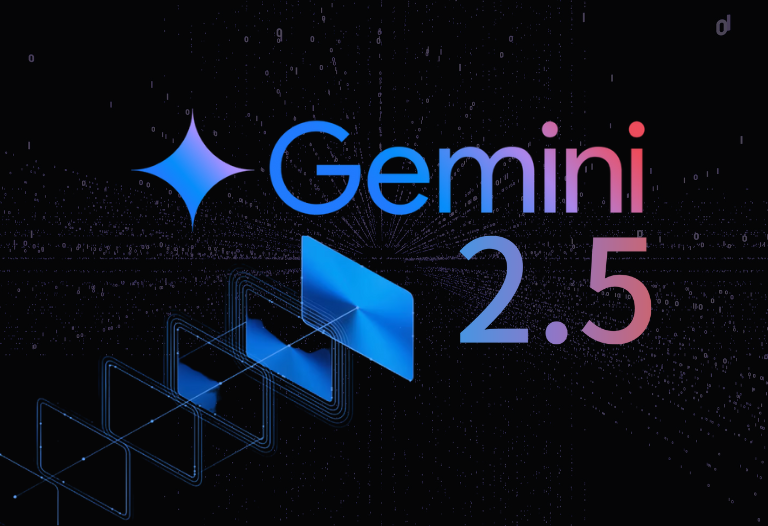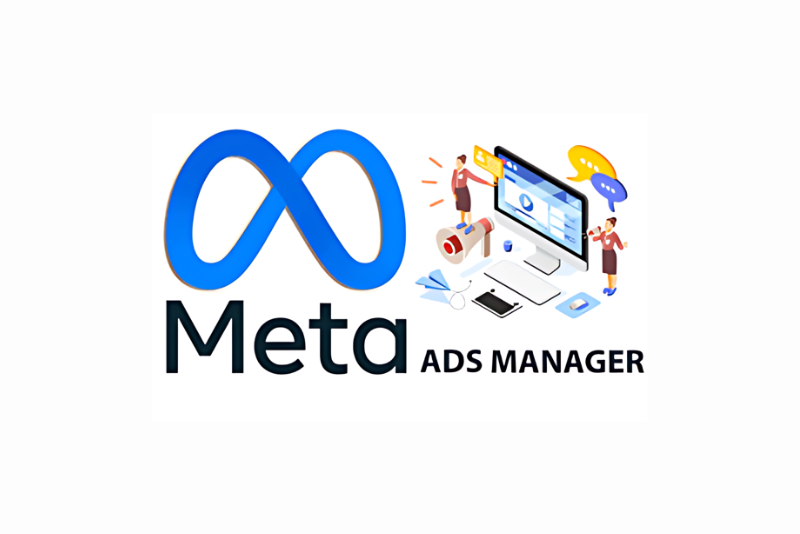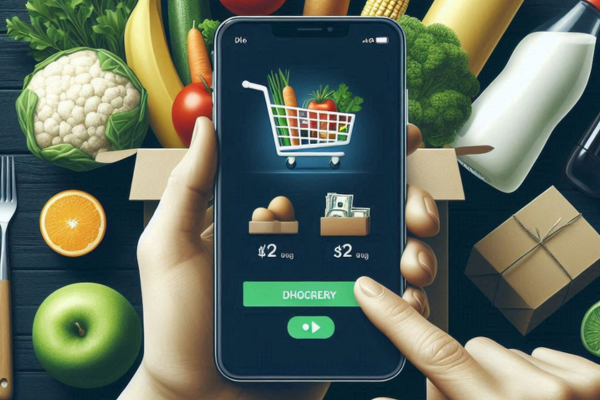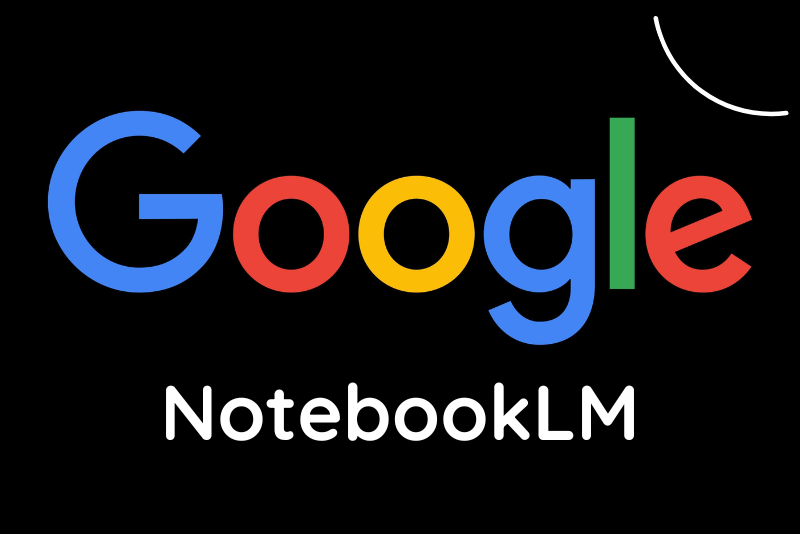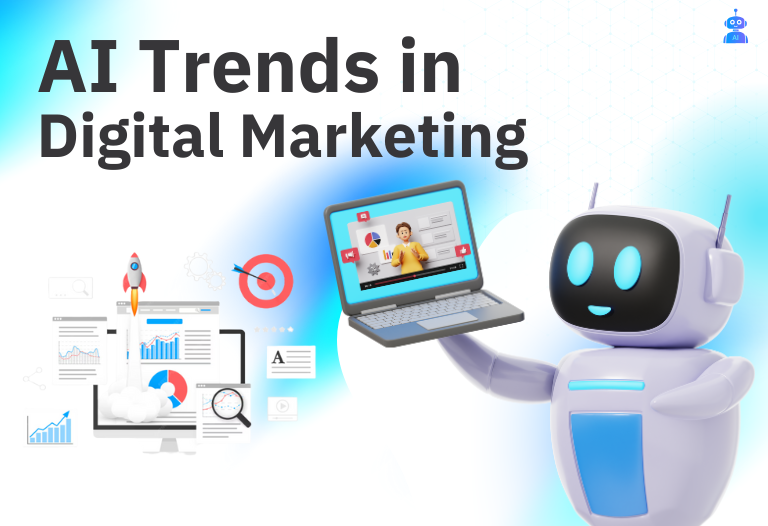
Marketing changes fast. Blink, and a new platform is trending.
Nothing is permanent and we’ve been told the day we step into the world of Digital marketing.
So, tools get outdated. Budgets shrink. But pressure doesn’t. And yet, your goals stay the same.
Today, you need to get attention, convert, grow – and do all of it quickly before you are outranked by your competition.
So where do you focus?
I will break it down here for you on what’s really shaping digital marketing services in 2025. Starting with where people spend most of their screen time.
1. Social Media Is Getting Real
The average user now spends 2 hours and 19 minutes daily across nearly 7 platforms, according to Datareportal.
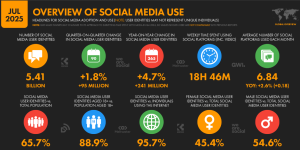
You already know where your audience lives. But do you know how their behavior is shifting?
Threads vs. BlueSky vs. What’s Left of X
X (formerly Twitter) isn’t what it used to be. Users are bailing. Engagement is low. Content quality? Not there if you ask me – and this is talking about the US market specifically.
So, now there are things happening on Threads and BlueSky. Both aim to grab X’s fallen crown.
Threads has around 275 million users now. BlueSky is still small though around 24 million, but growing. It was created by Twitter co-founder Jack Dorsey, BlueSky appeals to those who want ad-free feeds and control over what they see.
Threads feels more casual. People post, reply, joke, and debate. Brands that succeed there? Ones that post funny or smart text-only content.
It’s where the GenZ is hanging around these days, it’s all about memes, hot takes, and quick tips.
Meta is building threads fast. New features drop almost weekly. They’re not monetizing yet, but once user numbers climb, ads are coming. You can bet on that.
So, what does all this mean for a business like yours?
If you are a B2C offering services or products, and want to reach without being spammy? You can now afford to skip those polished brand videos – you were planning to get done from a pricey production house.
You can save the costs and just drop in with simple posts, questions, or insights on thread.
Let your brand feel human, and the people will connect in this new platform with a product with a brand that connects with them.
Employees Are the New Influencers
Forget celebrity endorsements. People trust people. I have seen many businesses trying to hide their talent and not exposing them fearing they will be poached. In fact, there are startups with strict social media rules policies and not even want their employees to focus on personal branding.
However, startups with GenZ at the help are more open minded. They support and promote employee generated content and marketing. That’s why Employee-Generated Content (EGC) is on the rise, especially on LinkedIn.
LinkedIn is booming in B2B. It’s set to hit 800 million users by 2025. But most brands barely scratch the surface.
Why does it work?
EGC feels real. It’s behind-the-scenes. It shows your people, your values, your culture. According to Forbes, 94% of consumers are more loyal to transparent brands.
I always recommend to not over-script it. Let your team be themselves. It’ll connect more than any glossy promo video.
Here’s how IKEA did it with simple backstage content. Nothing fancy. Just relatable moments.
View this post on Instagram
Influencers Out. Loyal Customers In.
In 2025, it’s not just about reach. It’s about relationships.
Big-name influencers still have a role. But more brands are now collaborating with real customers—the ones who already love them.
A beauty brand flew loyal fans to Mallorca for a community retreat. Those customers became creators. The content felt natural, not paid.
This works because it builds community. It turns customers into ambassadors. You don’t need millions of followers—just a few hundred who care.
So if you are a business that wants their audience to do the marketing for them – start small. DM your top fans. Offer early access. Host a private live Q&A. Make them feel seen.
2. AI Isn’t Optional Anymore, But Use It Smart
54% of marketers already use AI in their role, up from 37% last year. And that’s not counting the ones who use AI without even realizing it.
Social platforms. CRMs. Email tools. Search engines. Most already have AI baked in.
So the question now isn’t whether to use AI. It’s how you use it.
And how you don’t burn out in the process.
AI Fatigue Is Real
There’s pressure everywhere to “use more AI.” Get more done. Be faster. Automate everything.
But here’s the thing. AI takes time to learn. It doesn’t magically fix everything. And jumping between tools? Exhausting.
That’s why many marketers feel drained. Too many tools. Too little clarity.
AI should save time. Not add stress.
What you can do is Zoom out.
Find one or two areas AI can truly help. Maybe it’s reporting. Maybe it’s automating email flows. Start there.
AI can’t think like us. It’s not creative or strategic. But it can do repetitive tasks for you. So, you can let it handle the grunt work while you focus on the big picture.
3. AI Agents Are the Next Big Thing
This one’s big. And it’s already happening. In 2024, most people used AI for one thing at a time. Like writing a blog draft. Or summarizing a report.
In 2025, AI is moving from “writing stuff” to doing stuff.
AI agents
These are smarter tools that don’t just generate content—they act on it.
Think this through. An AI agent can:
- Pull data from Google Analytics
- Check your Meta ad performance
- Create a report
- Send it to your inbox every morning
All without you touching a thing. This changes the game for digital marketers. Especially if you’re running lean.
We at Primotech are building exciting AI agents to help in inbound query handling, lead nurturing and sales automation. If you want something similar, feel free to reach out to us and we will build an AI agent for you to do all grunt work so you can optimize what matters.
4. AI Is Reshaping Ecommerce
Let’s start with shopping. AI has changed how people buy. What used to be a basic product feed is now a personalized journey.
Here’s how ecommerce brands are using AI today:
- Tailored recommendations. AI analyzes what people browse and buy. Then it suggests the right products at the right time.
- Chatbots that actually help. They don’t just answer FAQs. They guide customers through choices and even upsell.
- Dynamic pricing. Prices now change in real time based on demand, competitors, and user behavior.
- Visual search. Upload a photo. Get product matches. That’s how people shop now.
- Voice commerce. “Alexa, order my usual shampoo.” That’s not the future, it’s already here.
This is more than tech. This is what digital marketing services need to deliver personalized, fast, and frictionless buying experiences.
Jim Lecinski paints a clear picture. Imagine this: You upload a wedding invite photo to a fashion store. You tell it your size, your budget, and that you need semi-formal attire. AI finds the perfect outfit. Done.
That’s what AI-powered ecommerce looks like.
5. AI Makes Ads Smarter And Easier
Running ads used to mean hours spent on targeting, bidding, tweaking copy. Now? AI can do most of it.
If you’ve run ads on Meta or Google recently, you’ve seen it, Performance Max, Advantage+, and other machine-learning-powered campaigns.
You set the goal. AI figures out the rest, where to run it, how to optimize it, and when to scale.
But here’s the thing. You still need strategy.
The marketers who win are the ones who guide the AI, not just plug and pray. That’s where as a marketing team at Primotech, our expertise comes in. Let me share an example where we helped a client save on gmail placements.
So, one of our clients’ strategies had automation that had the campaign spending too much on Gmail placements. Now, the AI was not able to understand the pain area of the client here, and adjust the strategy. That’s where we stepped in and completely restructured the campaigns to drive better ROI via Google Maps or YouTube Shorts instead.
Our Data-Driven Marketing helped the client achieve 4.5X ROAS. This was possible because PPC strategists at Primotech, looked at the campaign structure, and performance. And then guided the AI for better results while saving money.
I strongly recommend marketers and business owners to set up feedback loops. Monitor results daily. Don’t just hand over the keys to AI and walk away.
6. Voice Search Isn’t a Trend—It’s a Standard
Today, 51% of voice shoppers use voice to research products.
22% actually buy with it.
And 17% reorder products using voice.
That’s not a niche. That’s a big chunk of your audience.
People now expect to talk to their devices. And they expect those devices to respond intelligently.
Think beyond, “What’s the weather?”
Picture this:
“Plan me a 5-day vegetarian meal plan. Each meal under 20 minutes. Order the groceries. Have it delivered by Friday morning.”
That’s what people want. Smart. Simple. Seamless.
So as a business what can you do?
Start optimizing for voice. Think conversational keywords. Use local SEO. Create FAQs that match natural speech. Look at your Google Search Console data. Spot long-tail questions. Rewrite your content to sound like answers, not articles.
7. Social Search Is Getting Big
Your audience isn’t just Googling anymore. They’re TikToking. Instagramming. Redditing. YouTubing.
And yes, they’re searching.
Gen Z, in particular, prefers searching on reddit over Google. They want fast, real responses. With faces. With proof.
Social platforms are SEO engines now as well along with LLM platforms.
Your posts, your profile, even your hashtags- everything matters.
This is where SEO becomes Data-Driven Marketing in real time. You see what content gets traction. You optimize on the fly.
Start treating social channels like search engines. Use keywords in captions, bios, and overlays. Create content that answers real questions.
8. GEO > SEO?
This one’s new—and it’s big. You’ve heard of SEO. But in 2025, it’s time to focus on GEO: Generative Engine Optimization – some are calling it AI SEO as well.
Now. what’s that?
It’s the process of optimizing your content not just for Google’s classic results but for AI-generated search results.
Tools like Google’s AI Overviews, ChatGPT, Perplexity, and Gemini are now showing AI-generated summaries at the top of search.
Gartner says:
- 70% of users trust AI-generated answers
- 79% will use AI-enhanced search this year
That changes everything.
In fact, Google now uses generative AI in over 20% of queries.
So your blog posts, product pages, and guides need to show up in AI summaries, not just blue links.
Write clearly. Use direct answers. Include stats, examples, and original insights.
AI needs clear inputs to generate summaries and it rewards content that helps.
9. AI Skills Alone Won’t Cut It
Yes, you need to understand AI. No, you don’t need to become a machine learning expert.
Here’s the reality: most marketing teams in IT today lack AI strategy and marketing use cases.
Most marketers use AI casually. A little ChatGPT here. Some automation there.
But that’s not enough anymore. In 2025, marketers need to know what AI tools work for them—and how to use them properly.
You can’t chase every shiny new thing. You have to double down on what helps you drive real results.
For example, if you use ChatGPT for blog outlines, spend time learning prompt crafting. Test how it handles tone. Get better, not broader.
Go deep on 1–2 AI tools you already use. Read walkthroughs. Watch how others use them. Build your edge where it counts.
10. Content Marketing? Still Huge. But Different
Let’s shift gears for a second. Content still drives everything – whether it is SEO, engagement, or conversions.
But how we create and repurpose it? That’s evolving too.
→ Old Content Can Still Work
Not all new content needs to be new. That blog from 2022 that used to bring traffic? It might just need a refresh.
Neil Patel’s research shows updating content can boost traffic by 106%.
Sometimes a few new stats. A cleaner format. Or a video added in. That’s all it takes.
So, run a quick content audit. Find 10 posts that used to perform but now don’t. Start updating.
→ Don’t Go Full-AI or Full-Human. Combine.
AI tools like ChatGPT, NotebookLM, or Claude can help you draft faster. But here’s the catch, 50% of people can now spot AI-generated content. And 52% lose interest once they suspect it.
Google knows this too. That’s why it rewards original, high-E-E-A-T content.
What you can do is let AI help with research or drafts. Then layer in human insights, examples, data, or opinions.
Add your own voice. Talk like a person. Use real examples. Include screenshots, photos, or quotes.
No shame taking a bit of assistance here and there, but in totality, the content you are putting out should reflect your tone, style and branding.
So, What Should You Actually Do?
All this info is helpful. But only if you act on it.
So here’s a checklist. Pick 3–5 things to start with this month:
Your 2025 Digital Marketing Action List:
- Audit your content and update 5 top posts
- Set up 1 AI-powered report or automation
- Try one new platform (maybe Threads?)
- Get insights from your marketing team on how to run a test campaign using Advantage+ or Performance Max
- Host a LinkedIn post from a team member (EGC)
- Rewrite one page for GEO instead of just SEO
- Run a voice search on your product, see what comes up
- Ask your top customers to co-create a piece of content
Don’t try to do it all. But don’t wait either. The brands that move fast will stay ahead. The ones that wait? They’ll be catching up for the next 2-3 years.
Need a Team That Actually Understands This?
You’ve just read about how AI is changing everything in digital marketing, from ecommerce to SEO, from content to customer behavior.
But reading is one thing. Making it work for your business? That’s where most brands get stuck.
That’s where we come in.
At Primotech, we don’t just follow trends. We turn them into results.
- We build AI-enhanced marketing strategies that actually scale.
- We run Data-Driven Marketing campaigns that drive growth, not just impressions.
- We design and develop tools and workflows that automate what wastes your time, so your team can focus on what matters.
- We blend tech, SEO, paid media, and real content strategy, all handled by specialists, not generalists.
Whether you’re trying to figure out where to start with AI, want better results from your campaigns, or just need a team that can finally execute, let’s talk.
You can reach out to me directly at [email protected] or Book a free consultation with Primotech here!




 August 7, 2025
August 7, 2025